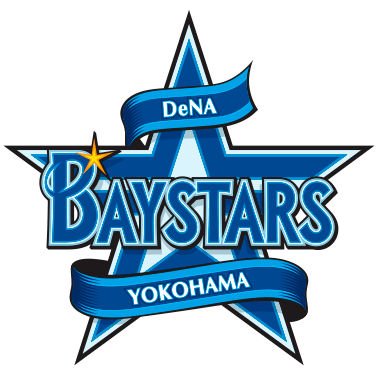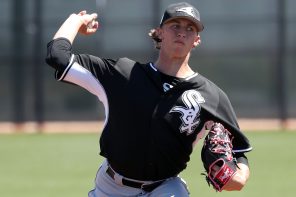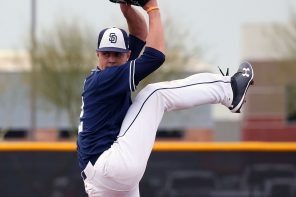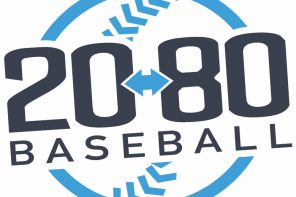Shun Yamaguchi

|
|
Yamaguchi has had an interesting progression to this point of his professional career. Drafted out of high school by the Baystars in 2005, he debuted as a hard throwing 18 year old the next year, but would go on to throw only 64.2 IP in his first three pro seasons. With a big frame, a very strong lower half and smooth, simple mechanics, Yamaguchi resembles more of a western style pitcher than the traditional stop-and-start Japanese version. He broke in as a reliever with a fastball in the mid-to-upper 90s, but has battled command, control and consistency issues. He hadn’t put together a full season until 2009 when he threw 55 innings in 51 games, saving 18 of them. He struck out 11.1/9 IP and only walked 2.8/9 IP that year, but also gave up 7.2 Hits/9. The next three seasons he would build on those numbers, throwing 68.2, 61.1 and 62 IP with 30, 34 and 22 saves respectively, before falling to 46.2 IP in 2013. He also saw his velocity fall to the low 90s, and saw his hits-per-9 spike to 8.9 in 2013 from 6.7 and 6.8 the two years prior. He also put up kind of a weird stat in that he finished 22 of his team’s games, but only “saved” seven that year. He also threw six shutout innings in the minor leagues in 2013, in which he surrendered four hits, struck out nine and didn’t walk a batter. In his peak years, he looked like a potential late-inning reliever with two plus secondary pitches to go with his plus fastball; a slider with 3/4, downer bite and a hard splitter with late tumble. But seeing how the stuff was coming out in 2013, it made you think that his potential to impact a big league team in the future was drying up. It was then that Yamaguchi and the Baystars went in a completely different direction and upon his return to the big leagues in 2014, it was to the starting rotation and not to the closer’s spot he was accustomed to. He ended up in 33 games in 2014, 17 of which were starts (three complete games, two of them shutouts); finished with 124 innings pitched (career best) and 7.8 H/9, 7.0 SO/9 and 4.4 BB/9. 2015 was spent entirely in the rotation, throwing 114 1/3 innings and seeing his BB/9 fall to 3.3/9, his SO/9 rise to 9.4-per-nine innings, but he also started giving up hits in bunches – 10.0 per 9 IP. So far in 2016 his numbers are a little bit better; hits have come down to 8.9/9, but I still think it is a stretch to see Yamaguchi having the same impact in a major league rotation that he could potentially have in a major league bullpen role. Provided that he is healthy, his best bet may be to channel his inner Koji Uehara and bill himself as a bullpen arm that can slot into the seventh inning immediately…and potentially go multiple innings. Going back to shorter stints, he should see some velocity return, and he can focus on fine-tuning his hard slider and splitter. In years past I have seen his stuff be better than that of Tony Barnette (RHP, Rangers) who just got two years and $3.5 million for his services in the majors, albeit with less command Barnette. Yamaguchi is still just 30 years old, but not yet a free agent, so he would need to be posted by the BayStars to make the move the U.S. major leagues (he stands to hit international free agency at some point during the 2018 season*). Yamaguchi’s value as a posting target is tied directly to his ability to turn in a fully healthy and consistent 2016 season; Yokohama is not opposed to the posting system, and knowing that they wouldn’t reach the maximum posting fee of $20 million for him in any case, perhaps the team will want to capitalize on the opportunity. Industry opinions are varied on whether or not he will be posted, but he is among the top players to watch. Given the current demand for power arms in the pen, a $5-to-7 million posting fee, plus another $5-to-7 million over two or three years for Yamaguchi is not a huge stretch. |



